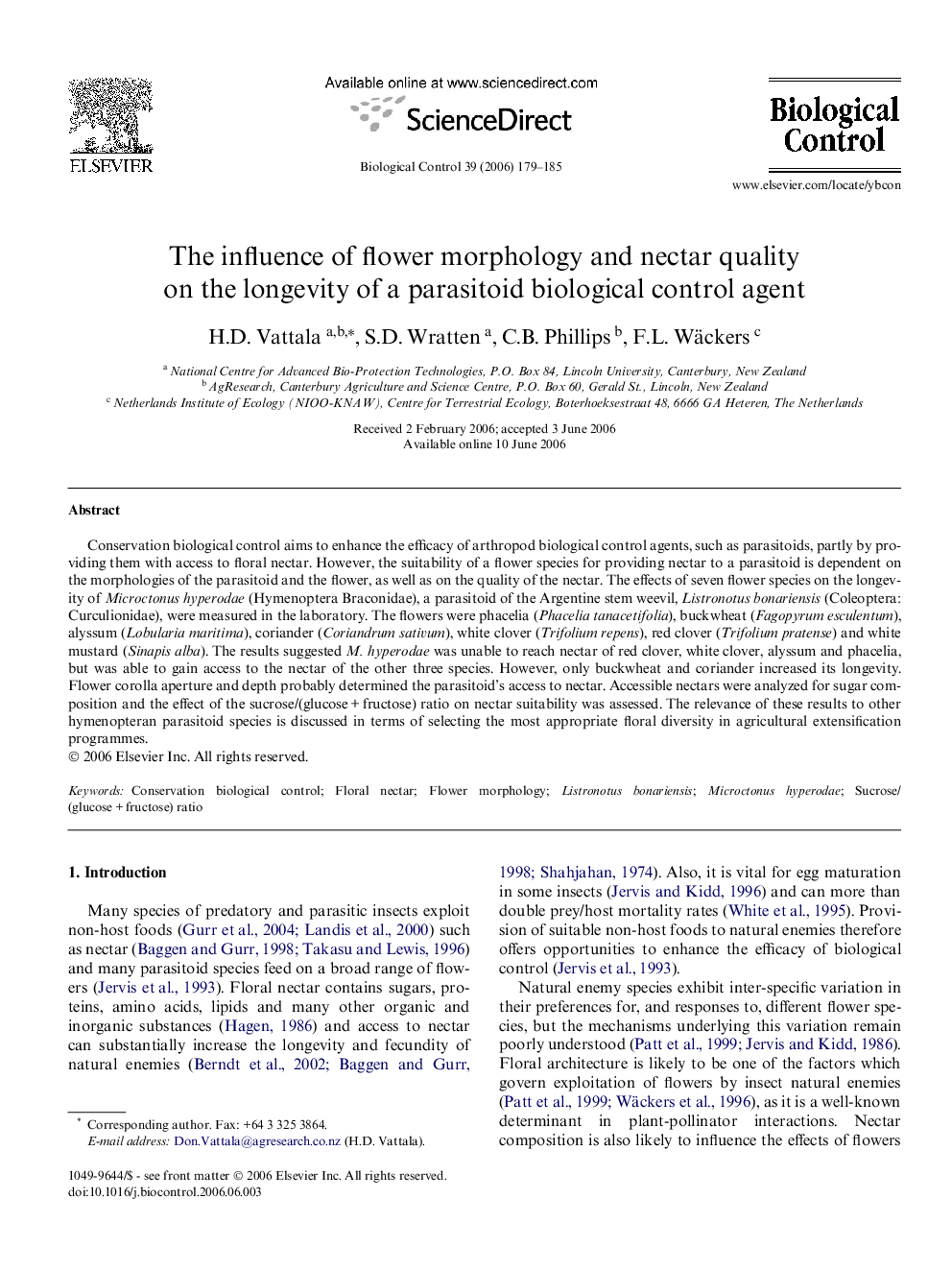| کد مقاله | کد نشریه | سال انتشار | مقاله انگلیسی | نسخه تمام متن |
|---|---|---|---|---|
| 4505255 | 1321135 | 2006 | 7 صفحه PDF | دانلود رایگان |

Conservation biological control aims to enhance the efficacy of arthropod biological control agents, such as parasitoids, partly by providing them with access to floral nectar. However, the suitability of a flower species for providing nectar to a parasitoid is dependent on the morphologies of the parasitoid and the flower, as well as on the quality of the nectar. The effects of seven flower species on the longevity of Microctonus hyperodae (Hymenoptera Braconidae), a parasitoid of the Argentine stem weevil, Listronotus bonariensis (Coleoptera: Curculionidae), were measured in the laboratory. The flowers were phacelia (Phacelia tanacetifolia), buckwheat (Fagopyrum esculentum), alyssum (Lobularia maritima), coriander (Coriandrum sativum), white clover (Trifolium repens), red clover (Trifolium pratense) and white mustard (Sinapis alba). The results suggested M. hyperodae was unable to reach nectar of red clover, white clover, alyssum and phacelia, but was able to gain access to the nectar of the other three species. However, only buckwheat and coriander increased its longevity. Flower corolla aperture and depth probably determined the parasitoid’s access to nectar. Accessible nectars were analyzed for sugar composition and the effect of the sucrose/(glucose + fructose) ratio on nectar suitability was assessed. The relevance of these results to other hymenopteran parasitoid species is discussed in terms of selecting the most appropriate floral diversity in agricultural extensification programmes.
Journal: Biological Control - Volume 39, Issue 2, November 2006, Pages 179–185